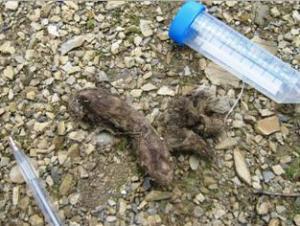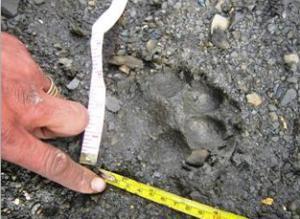Samundra Ambuhang Subba
My research will attempt to assess the distribution, prey and conservation issues of Tibetan wolf in Dolpa, Nepal. The scats will also be used to confirm its taxonomic status in the future.

Confirmed himalayan wolf's scat by genetic analysis.
Always fascinated by wolf and the mystery associated with it, the idea of studying Tibetan wolf occurred to me during my period of work in WWF, Nepal while assisting various WWF researchers and other biologists on different projects of carnivores. Through literature reviews and discussions with various researchers in Nepal I found that no studies have been done so far except some opportunistic anecdotes and couple of genetic studies of captive Tibetan wolves in India. These genetic studies stated that it could be a different species on its own and not a sub-species of Gray wolf (Canis lupus) (Agarwal et. al 2007). The most serious threat is the conflict with humans triggered by their propensity to predate on livestock for which they are severely killed in retaliation. It seemed a shame that such a charismatic animal should be allowed to disappear, and that the lack of information represented a major hindrance in drawing up a strategy for its conservation.

Wolf's pugmark on the way to Dho from Vijer.
My project was developed to address this lack, so that my findings may be a beginning to address the conservation challenges facing Tibetan wolf. The research objective is to assess the distribution pattern of Tibetan wolves and understand ecological parameters such as prey species selection through scat analysis. Scats of wolf will also be collected for genetic analysis in a Kathmandu laboratory for further study.
The analysis will be able to determine if the Tibetan wolf is indeed a distinct species, as indicated by studies in India. It will also enable a landscape-wide analysis of gene-exchanges with other populations as more material becomes available in the future. Studies have documented human conflict with predators like snow leopard and Himalayan black bear but that with Tibetan wolves has remained unrecorded. My study will also assess the levels of conflict and the attitude of the human population sharing the space with this apex predator in Dolpa, to provide baseline quantitative information that will help define conservation strategies needed.